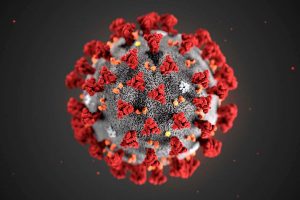After battling the Covid-19 pandemic for almost two years, a new virus outbreak has been reported in the UK, which is spreading like wildfire. Referred to as the vomiting bug, Norovirus is highly infectious and causes vomiting and diarrhoea.
 Arushi Bidhuri of The Health Site writes Public Health England issued a warning about this nasty virus after routine surveillance reported that there has been a massive jump in cases of norovirus. According to reports, 154 outbreaks have been recorded in England since May. This is roughly three times the previous five-year average of 53 outbreaks over the same time period. According to PHE, while small children have been affected, there has also been an increase in infection across all age categories.
Arushi Bidhuri of The Health Site writes Public Health England issued a warning about this nasty virus after routine surveillance reported that there has been a massive jump in cases of norovirus. According to reports, 154 outbreaks have been recorded in England since May. This is roughly three times the previous five-year average of 53 outbreaks over the same time period. According to PHE, while small children have been affected, there has also been an increase in infection across all age categories.
As we continue to take precautionary measures against Covid-19, here are some precautions you should take to avoid the contraction of the highly infectious, norovirus. Again, the most important thing is to pay close attention to hygiene.
Quarantine yourself in case you experience any symptoms of norovirus.
Wash your hands frequently and thoroughly, using soap and water. Unlike COVID-19, alcohol sanitisers do not kill norovirus, therefore soap and water are the best options.
To disinfect contaminated household surfaces, use a bleach-based household cleaner or a mixture of bleach and hot water.
Avoid cooking or eating with others at least 48 hours after recovering from the infection.
Any contaminated clothes or bedding should be washed with detergent and at 60 C, and contaminated objects should be handled with disposable gloves if feasible.
People infected with the virus should take rest and stay hydrated.
Seek medical attention if symptoms persist for more than 24 hours.
Since young children and the elderly are more prone to rapid dehydration, take extra care and be cautious.








